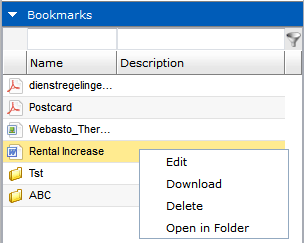
- LOGICALDOC USER CANNOT ACCESS MENU 1160 FULL
- LOGICALDOC USER CANNOT ACCESS MENU 1160 PASSWORD
Readaccess against directories => No Writeaccess is necessaryĭescription: Main purpose is to read out all available users and hold the line of synchronisation against an external directories. Thoughts about "must haves" obtained by gained expieriences through projects/studies This can be manged through set up a much higher rate of resultsets. This means, if we wanted to retriev all real users (for real at a count of 1000) we could retrieve an error message from a directories as to many results being expected. This behaviour could - for example - managed through a cron-job, being executed in a well defined intervall, to retrieve all users from a directory. Nevertheless must we keep an eye on such things. Surely, thats not a good case to make a joke. For instance, if a user want to list all users of LogicalDOC, the system must made a completely lookup to external directory to retrieve all users. This is not easy, and will be more complicated due to external authentications. LogicalDOC wants to claim the aim to offer best performance to manage millions of documents in a good time/cost relationship. Well, performance is a very critical mattor for every software-product. 
I think, implement directory access through LDAP is a big hard rock we´ll to claim on the next step - i guess. But at first, we should not implement all possible authentication possibilities(CAS, JAAS. The main aim is to achieving a useable state of LogicalDOC where customize-parties can easly manage external authentication.

Central Authentication Service manages authentications via HTTP or Shibboleth. In the last years LDAP becomes a big player managing users within companies and institutions.īut there are other "user stores" on the market which courts for using. Here comes LDAP in the game, which can be descriped as the SQL-Standard of directories. The most user directories(in real, those are no user stores than more common directories to store company-wide informations) have a standardised protocol gaining access from a external application.

LogicalDoc have to be move on, to extend his authentication model in such a case, that connections can be achieved against those directories. The motivation now is for sure, to getting access to the directory and get rid of the overworking tasks.Įxternal Userstores & bridges to the OutworldĪs decribed above, companies as well as instituions have in most situations a central managed user store (employees, perhaps partners costumers). This means in fact, that the user has to be stored within the directory as well as LogicalDOC if the user have to go for it. Well if a company obtains a central user database(in the most cases a digital directory), of course its a inconvinced issue to make things twice. If the user not exist, a system administrator have to be confirmed about this.
For instance, to login as a user, you´ll type in you username as well as password upon the web interface (or via WebDAV-Authentication Request which being managed through OS).
2 External Userstores & bridges to the Outworldīasically, LogicalDOC introduces a common HTTP Authentication mechanism, which lookups user credentials in a proprietary user database. Document management and routing options can be configured to fit company processes with the integrated workflow, allowing administrators to create and manage complex workflow models with parallel task executions, sequential steps, and assignment of users to tasks. The optical character recognition (OCR) technology extends to barcode recognition, allowing the automation of data entry in conjunction with document templates by using linear/1D and 2D barcodes to populate document metadata for all attributes, including custom attributes.  Users can search for documents anywhere within LogicalDOC, with full-text search of metadata and content, as well as tag search functionality. New document versions are produced each time modifications are made, such as check-out/check-in operations and metadata changes, with the latest version made available for current operations while older versions remain accessible for reference.
Users can search for documents anywhere within LogicalDOC, with full-text search of metadata and content, as well as tag search functionality. New document versions are produced each time modifications are made, such as check-out/check-in operations and metadata changes, with the latest version made available for current operations while older versions remain accessible for reference.
Full contents of all documents stored in the repository are automatically indexed, with different algorithms able to index documents in a range of languages, including French, German, Spanish, Chinese, Arabic, Russian, and more.








 0 kommentar(er)
0 kommentar(er)
